When does evening primrose blossom
Evening primrose is a kind of rattan shrub, not the branches and leaves that we usually think of as roses. The petals are yellowish green. When the summer night comes, the clusters of bell-shaped flowers bloom quietly. When the treetops on the moon, it wafts out fragrance, which not only scents the noisy world, but also drives the words away. So this kind of flower is always praised and sung by people. Everyone has night incense, and there is an interesting little knowledge. Many people have heard of night incense, and many people have also heard of evening incense. Many people don't know that they refer to the same plant.
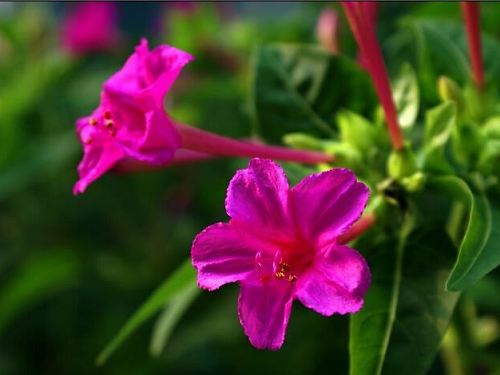
Generally speaking, the flowering period of nocturnal incense is from May to October, and the reason why it has such a large span is that it shows different seasons due to the influence of variety, temperature, humidity, soil and climate in the north and south, but we can already see that nocturnal incense blooms in summer night, which is what makes it hazy and blurred. In the north, the blooming season is in late June, while in the south, it is mostly from August to September. This is due to the high humidity caused by the summer heat in the south, which is suitable for night incense to bloom.
So why did evening primrose bloom in the dark night? There are two main reasons, that is, nocturnal incense, a plant that pollinates by ugly moths, is not small things such as bees like other flowers, and moths only appear at night, so in order to attract nocturnal moths to pollinate for him, nocturnal incense chooses to exert fragrance at night, which is the plant's ability to adjust itself to the environment. However, do you still have the habit of picking a flower on the tip of your nose and sniffing it in Nangang District?
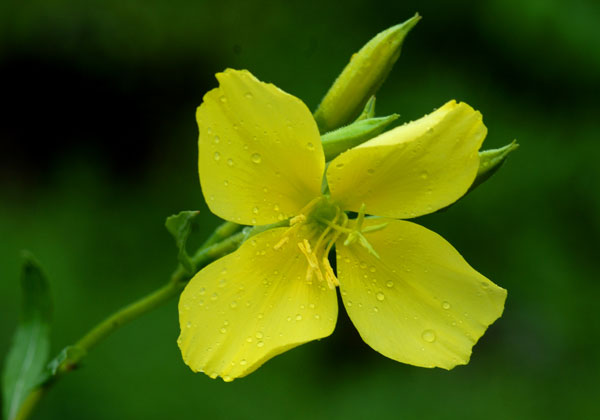
Another reason is that nocturnal incense and stomata are diametrically opposed to many flowers. For other flowers, when the air humidity is high, the stomata approach; when the air humidity is low, it expands, while nocturnal incense does the opposite. If the air is very humid, its stomata will open wide, and the aromatic substances inside will expand more quickly, thus making it fragrant to the nostrils. At night, because there is no evaporation of the sun, the surface temperature drops suddenly, the cold air drops, and the humidity increases abruptly, which is why it is easy to get foggy at night. Of course, night incense is easier to open in such a humid environment, and it opens more and more intensely.
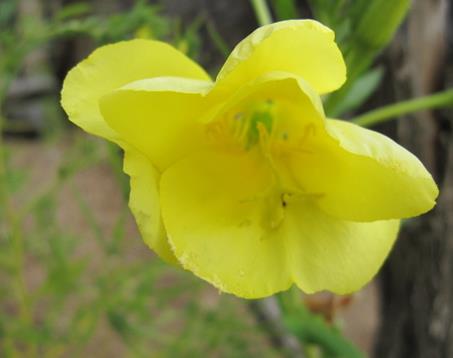
How to raise evening primrose
Night incense like loose, well-drained, organic-rich acid soil. So the soil we want to choose is generally made of peat soil or rotten leaf soil, or even a small amount of farm manure, that is, the manure of all kinds of animals. When potted, the bottom should be filled with broken bricks in the shape of particles to facilitate drainage. But also choose a well-ventilated environment, from the beginning of May to the end of September, it is appropriate to put sufficient sunshine in the hospital or maintenance on the balcony. Although it likes adequate sunshine, it should avoid hot sun exposure at noon in summer.
If summer is the peak growing season, the basin soil must be kept moist and watered twice a day, except for adequate fertilizer. If it is a seedling, it should be sprayed to the leaves once or twice a day. After the arrival of winter, it should be moved indoors, such as the temperature is lower than 5 ℃, the leaves will wither and fall off until death, so friends in the north should think twice. In this process, it should also be noted that it is best to apply fertilizer every two or three months, and pay attention to the prevention and control of diseases and insect pests.
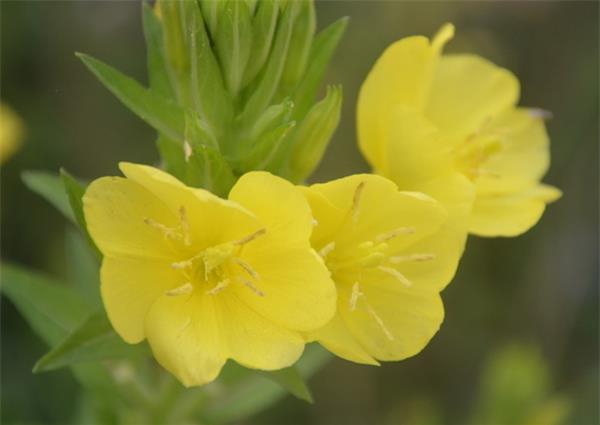
The flowering time of evening primrose
Night incense is a kind of plant that "sleeps" during the day and blossoms at night, so it is named "night incense". Does nocturnal incense only blossom at night?
Scientists have proved through experiments that this is not the case. Nocturnal incense is actually more closely related to the humidity of the air, whether it is day or night. As long as the humidity in the air is high, nocturnal incense will emit a strong aroma. Let's do an experiment. During the day, we put water basins around evening incense to maintain the humidity of the surrounding air. After a few hours, the petal stomata of evening incense will open and release a strong fragrance of flowers. Experienced florists also know that nocturnal incense can also give off fragrance on rainy days when the air is humid. It can be seen that nocturnal incense does not only give off its fragrance at night. It's just that because the air is wetter at night, the flowers have more chances to spread out and give off their fragrance.
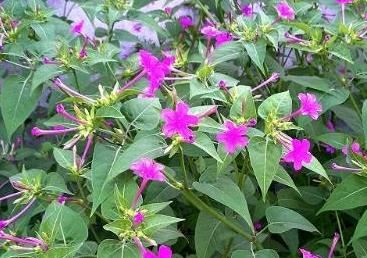
Biologists point out that the body of every organism is controlled by a complex innate circadian regulation function, which is the so-called "biological clock" in the organism. Since a French scientist discovered the physiological function of plants in 1729, people have gradually arranged the flowering rules of some plants. For example, in January, the plum blossoms are in full bloom; in February, the plum blossoms are in full bloom; in March, the primrose blossoms are in full bloom; in April, the peony flowers are in full bloom; in May, the peony flowers spit; in June, the lilacs spit out fragrances; in July, the wild lilies bloom; in August, the impatiens bloom; in September, the sweet-scented osmanthus floats; in October, the hibiscus is in full bloom; in 1 week, the chrysanthemums bloom all over the city; in December, the ivory red branches stand. Such as the time of the day: 3 am, the Cnidium blooms; 4 o'clock, the morning glory blows the trumpet; 5 o'clock, the rose comes out of the wall; 6 o'clock, the sunflower blossoms; 7 o'clock, the peony blossoms; 8 o'clock, the lotus blossoms; 9 o'clock, the white buttercup blossoms; 10:00, the half branch lotus blossoms; 12:00, the purslane comes out; 17:00, the jasmine blooms; 20:00, the night incense gives off the fragrance; 21:00, the strike flower "one present" At 24:00, the cactus opens. Under normal circumstances, these "biological clocks" will never "strike" the wrong time.
However, just as nocturnal incense flowering is not restricted by night, the flowering law of its species is not only restricted by internal genetic factors such as "biological clock", but also affected by external environmental conditions, therefore, their flowering time is not immutable.
. it's just that because the air is wetter at night, the flowers have more chances to spread out and give off their fragrance.

Biologists point out that the body of every organism is controlled by a complex innate circadian regulation function, which is the so-called "biological clock" in the organism. Since a French scientist discovered the physiological function of plants in 1729, people have gradually arranged the flowering rules of some plants. For example, in January, the plum blossoms are in full bloom; in February, the plum blossoms are in full bloom; in March, the primrose blossoms are in full bloom; in April, the peony flowers are in full bloom; in May, the peony flowers spit; in June, the lilacs spit out fragrances; in July, the wild lilies bloom; in August, the impatiens bloom; in September, the sweet-scented osmanthus floats; in October, the hibiscus is in full bloom; in 1 week, the chrysanthemums bloom all over the city; in December, the ivory red branches stand. Such as the time of the day: 3 am, the Cnidium blooms; 4 o'clock, the morning glory blows the trumpet; 5 o'clock, the rose comes out of the wall; 6 o'clock, the sunflower blossoms; 7 o'clock, the peony blossoms; 8 o'clock, the lotus blossoms; 9 o'clock, the white buttercup blossoms; 10:00, the half branch lotus blossoms; 12:00, the purslane comes out; 17:00, the jasmine blooms; 20:00, the night incense gives off the fragrance; 21:00, the strike flower "one present" At 24:00, the cactus opens. Under normal circumstances, these "biological clocks" will never "strike" the wrong time.
However, just as nocturnal incense flowering is not restricted by night, the flowering law of its species is not only restricted by internal genetic factors such as "biological clock", but also affected by external environmental conditions, therefore, their flowering time is not immutable.
Related
- Wuhan Hospital Iron Tree Blooming Result Was Instantly Frightened by the Gardener Master
- Which variety of camellia is the most fragrant and best? Which one do you like best?
- What is the small blue coat, the breeding methods and matters needing attention of the succulent plant
- Dormancy time and maintenance management of succulent plants during dormancy
- Minas succulent how to raise, Minas succulent plant pictures
- What are the varieties of winter succulent plants
- How to raise succulent plants in twelve rolls? let's take a look at some experience of breeding twelve rolls.
- Attention should be paid to water control for succulent plants during dormant period (winter and summer)
- Watering experience of twelve rolls of succulent plants
- Techniques for fertilizing succulent plants. An article will let you know how to fertilize succulent plants.



